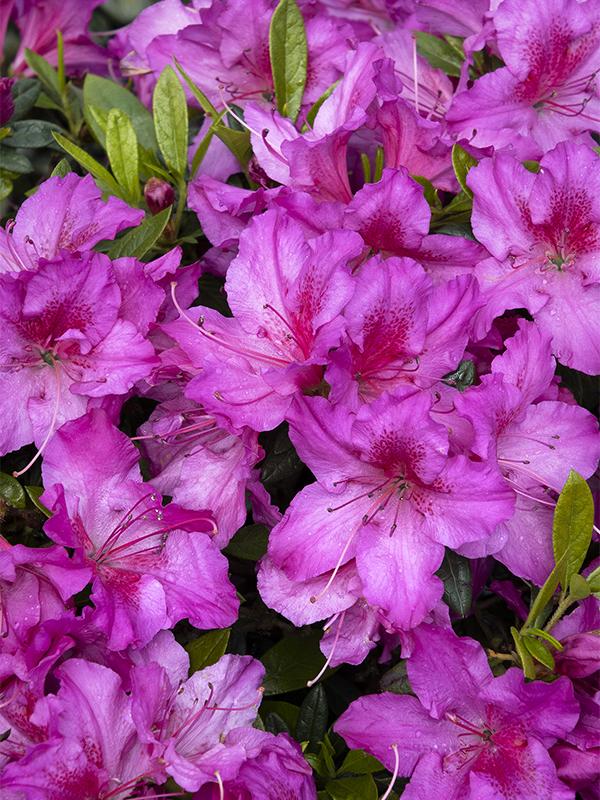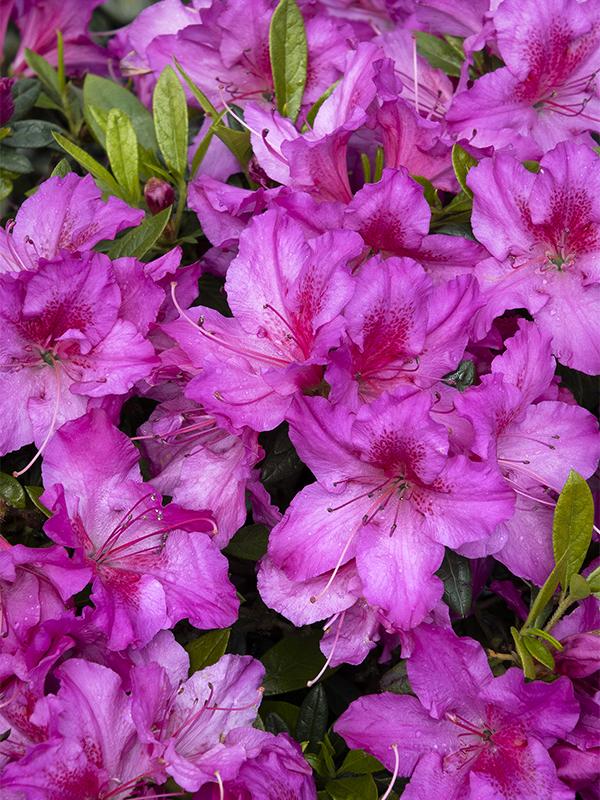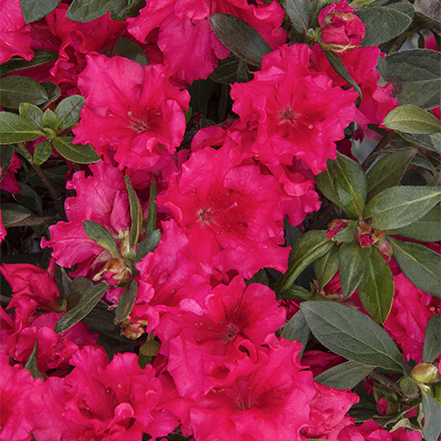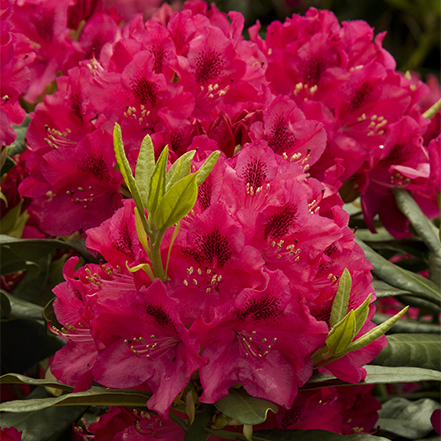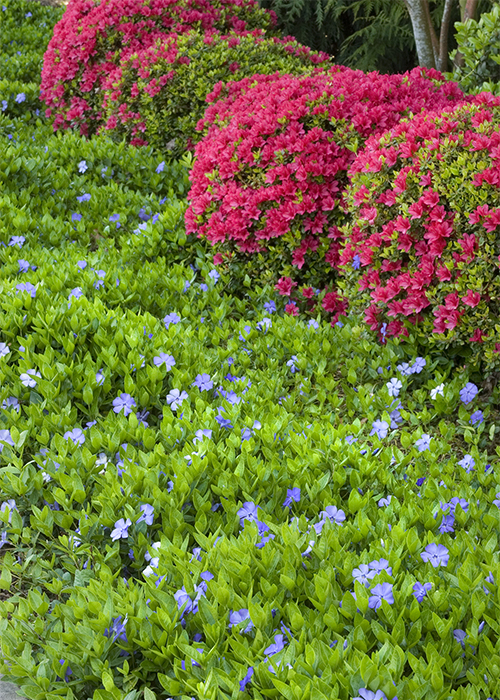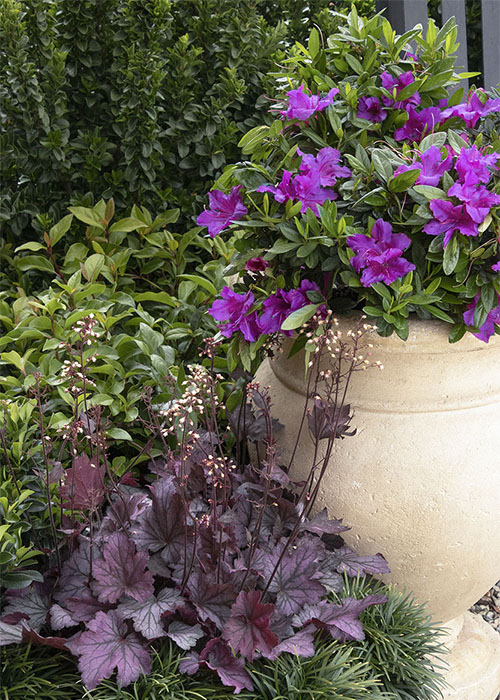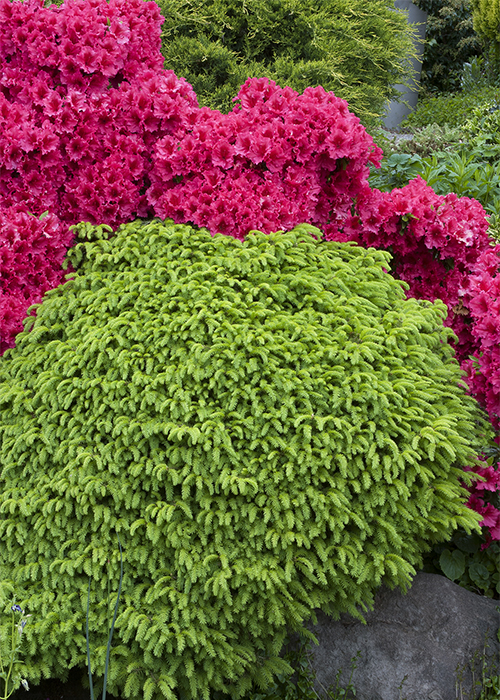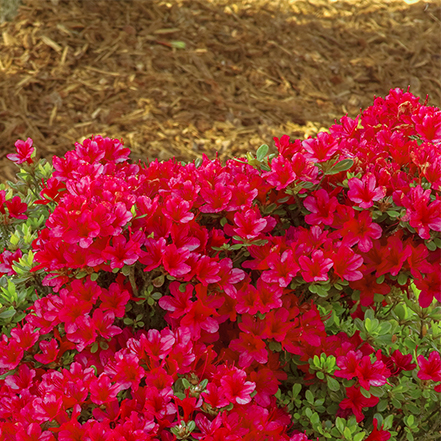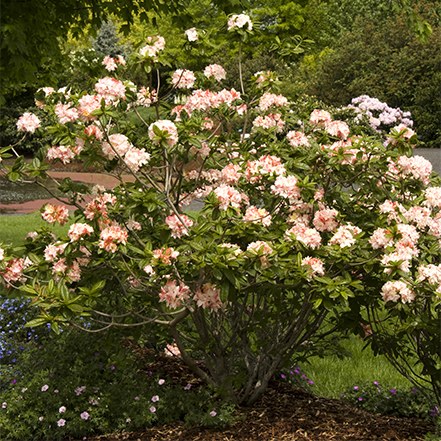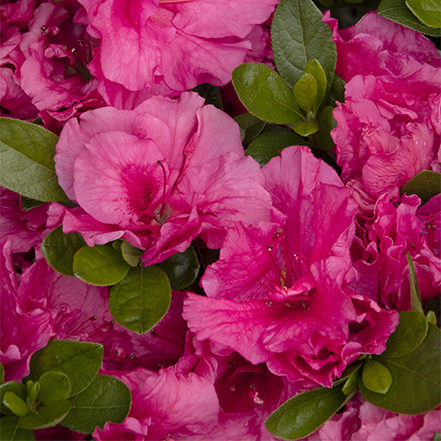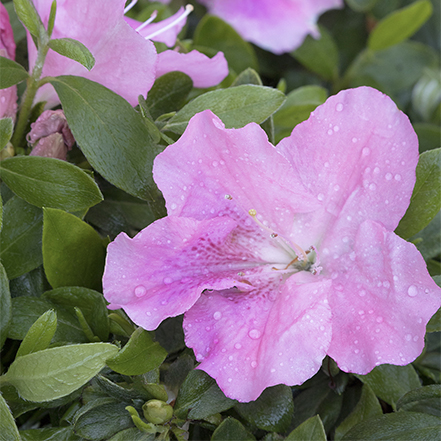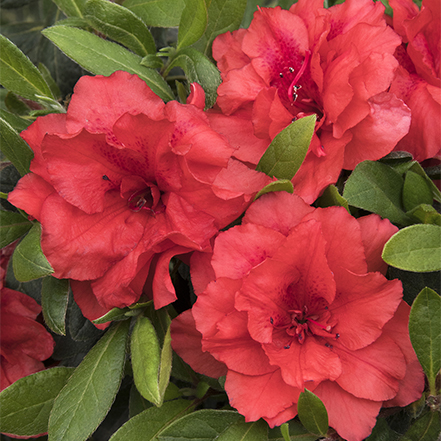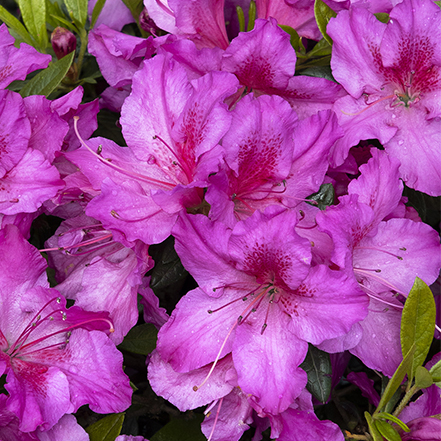It’s difficult to think of a southern garden without envisioning azaleas graciously and vibrantly sweeping through the background. They are arguably one of the most popular ornamental shrubs in the South, along with our beloved hydrangeas. But azaleas aren’t just for Southerners to enjoy. With all the varieties of azaleas to choose from, people living further north can successfully grow azaleas in their gardens. (Azalea varieties range in hardiness from zones 5-9). In fact, dozens of azalea species are native to the United States, making them well-suited to various regions and climates.
One of the reasons azaleas are so popular is their versatility. Coming in many different shapes, sizes, and colors—some evergreen and some deciduous. That said, azaleas sometimes get a bad rap because of their short blooming season—usually about three weeks. That's why reblooming varieties like Double Shot® are such a hit.
Table of Contents:
1. What's the difference between azaleas and rhododendrons?
2. How to use azaleas in garden design
3. When, where, and how to plant
4. How to water, mulch, and fertilize
5. When, why, and how to prune
6. Common azalea challenges (including azalea lace bugs)
7. Best easy-care azaleas
If you're wanting to ramp up your azaleas' flower power or just enjoy them for their other attributes. You can do several things:
- Practice appropriate pruning techniques and plant care.
- Plant several varieties of azaleas in different areas of your garden—some blooming in early spring, some in summer.
- Consider planting a reblooming variety, like Monrovia’s exclusive Double Shot® Azaleas. This is to get blooms in the spring and then again in summer—all in one plant!
To that end, this guide covers a number of helpful topics. These will hopefully help you grow azaleas in your garden with greater confidence. Do you have your own tip to share? Please let us know on social media @MonroviaPlants.
1. Azalea vs. Rhododendron: What's the difference?
What's the difference between azaleas and rhododendrons?
Azaleas and rhododendrons are often confused because an azalea is always a rhododendron, but a rhododendron is not necessarily an azalea. All plants commonly known as "azaleas" or "rhododendrons" belong to the genus Rhododendron, which has eight subgenera comprising nearly 1,000 species and 20,000 hybrids. Azaleas are found in two of these subgenera.
Most cultivated azaleas have been bred from native species found in Asia and North America due to their attractive flowers. Azaleas are generally deciduous, while other rhododendrons are evergreen. The flowers of azaleas are funnel-shaped, two-lipped, and usually fragrant, while rhododendron flowers are often bell-shaped. Azalea flowers typically have 5 stamens, whereas rhododendrons have 10 or more. However, there are also intermediate forms between azaleas and rhododendrons.
Perhaps the easiest way to think of it is this. Azaleas are simply a specific subgroup of plants within a larger group of plants. Ones that are more generally referred to as "rhododendrons."
To distinguish between azaleas and rhododendrons in your garden, look for these characteristics:
- Rhododendrons are always evergreen, while azaleas can be evergreen or deciduous.
- Rhododendrons are generally larger in size, flowers, and leaves, with glossier and thicker leaves.
- Azaleas are small to medium-sized shrubs with many smaller stems, while rhododendrons have fewer, sturdier stems.
- Azaleas have smaller, funnel-shaped flowers, while rhododendrons have larger, bell-shaped flowers.
Both plants typically bloom in spring, with some varieties blooming into summer and fall, depending on location and climate. Double-blooming azaleas, such as Double Shot® Azaleas, bloom in spring and again in summer.
Note: For the purposes of this guide, we're focusing on evergreen azaleas. They are one of the most common azaleas in garden design.
Azaleas are utility players in the garden, providing stunning beauty when in bloom and as a reliable evergreen backdrop to help other plants shine throughout the year. With the wide variety of azaleas available, you can likely find one that suits almost any ornamental shrub design need.
Larger azalea varieties thrive when given ample space to grow, making them an excellent choice for the perimeter of your yard or as the backbone of larger beds. Medium-sized varieties look great when planted in sweeps to create naturalized islands of shrubs, allowing you to see above and beyond them. Compact varieties are perfect for borders, along paths, and in containers.
5 Ways to use azaleas in your garden
1. En masse
Drifts of azaleas can "hug" a yard and direct your eye from one space to another, naturally connecting them together. Their mounding form makes them ideal candidates for massing in shrub borders and perennial beds.
2. Hedges
Evergreen azaleas like Double Shot® Azaleas make for great hedges thanks to their dense growth habit and evergreen leaves. The pop of color adds a layer of excitement twice a year, too.
3. Foundation Plants
You might notice that azaleas are often used as foundation plants (planted next to the foundation of the home). This is because they are the perfect size and shape to fill the role. They also look great in the full- to part-shade conditions that you often have right next to the house. Plus, the bright flowers look gorgeous against a wall of any color.
4. Container Specimens
Compact azaleas (like Double Shot®) are perfect for containers. They are great for adding a pop of color to patios, porches, and outdoor rooms.
5. Garden Specimens
Use a single azalea shrub to punctuate and anchor a smaller garden bed. There are so many forms and colors to choose from. You can combine them with just about anything in the garden and make a beautiful impact.
3. Where, when, and how to plant azaleas
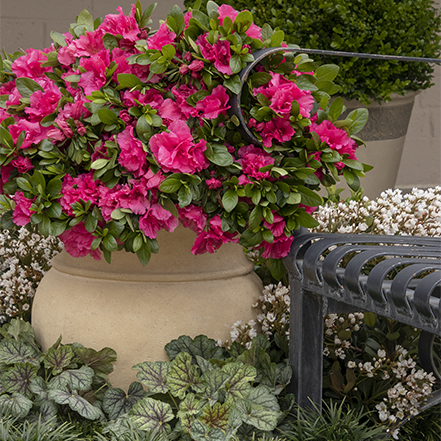
Azaleas are an extremely hardy shrub. In fact, I include them on my list of “bullet-proof plants” when talking to clients. But there are certainly things you can do to ensure a happier and healthier plant. Here are a few things to keep in mind from the get-go.
Where to plant azaleas
As with all plants, the phrase “location, location, location” certainly applies to azaleas. For the most part they prefer partial shade or dappled sunlight, with morning sun always being the best. If they get too much sun, they will struggle from all the exposure. But if they get too little sun, you may have a healthy-looking plant, but not so many flowers.
- Azaleas are great for containers, just be sure to choose a larger-sized container to allow room for their robust growth.
- Azaleas prefer moist, well-drained soil, as their shallow roots don’t like sitting in water.
- Azaleas also prefer soil that’s on the acidic side of the pH scale (pH of 4.5 to 6.0). People who have naturally acidic soil will be able to grow azaleas quite easily. However, if you have more neutral to alkaline soil, you will need to amend the soil. Aluminum sulfate, sulfur, acidic fertilizer, and iron sulfate are all commonly used to make the soil more acidic. You can also use coffee grounds, pine needle mulch, and sphagnum peat moss as more gentle forms of acidifying soil.
When to plant azaleas
In milder regions, you can plant azaleas almost any time of year. But the best time is the spring or fall, when the temperatures aren’t too hot or too cold. Planting in fall is truly ideal because it gives them a chance to put down roots. This will better support the new growth and flowers in the spring.
How to plant azaleas
When planting azaleas, dig a hole about the same depth of the container and about 2-3 times as wide. Make sure to leave the top of the root ball just above the grade of the soil. Doing both will encourage the right kind of root growth. Then topdress with compost and mulch to give them some nutrients over time.
Azalea soil preferences
Azaleas require specific soil conditions to thrive, preferring acidic soil with a pH between 4.5 and 6.0. To create the ideal growing environment for azaleas:
- If your soil is naturally acidic, azaleas will grow easily. For neutral to alkaline soil, amend it with aluminum sulfate, sulfur, acidic fertilizer, or iron sulfate. Gentler options include coffee grounds, pine needle mulch, and sphagnum peat moss.
- Ensure the soil is well-draining yet moisture-retentive, mimicking the organic-rich woodland floor.
- Incorporate generous amounts of organic matter like compost, peat moss, or leaf mold to improve soil structure, aeration, water retention, and acidity.
Apply a layer of mulch around the plants to maintain soil moisture and temperature, simulating their native habitat.
Careful soil preparation and ongoing management are key to ensuring the health and vibrancy of azalea plants.
4. How to water, mulch, and fertilize azaleas
Once you have your azaleas in the ground make sure to give them what they need to thrive going forward.
How to Water Azaleas
When watering azaleas, aim toward the base. That way you will minimize getting water on their leaves; and, therefore, mitigate the chances of disease. The best time to water is always in the morning. Giving the sun time to dry off whatever water lands on their leaves.
How to Mulch Azaleas
Think “2 and 2” when mulching azaleas— 2 inches of mulch, 2 inches away from the trunk. This deters critters from munching on them. Acidic mulches, like pine straw, pine bark, and chopped oak leaves are best. As the mulch breaks down, it will give them the nutrients they love. Replenish the mulch every year or as needed.
How to Fertilize Azaleas
The best time to fertilize azaleas is in the spring, right after they are done showing off their beautiful flowers. That may be enough. However, if you get a good deal of rain, you could give them a second boost in midsummer. Although not too late into the summer when the sun is scorching. Acidic fertilizer is probably best, especially if your soil isn't truly acidic to begin with.
5. When, why, and how to prune azaleas
If you're looking to keep your azaleas their happiest ... and you too (i.e., more flowers and less maintenance). It's critical to understand when, why, and how to prune them.
When to prune azaleas
- Prune within three weeks of blooming to allow time for next year's flower buds to form.
- Double-blooming azaleas like Doubleshot® Azaleas bloom on both old and new wood, so pruning outside the ideal window may result in fewer spring blooms but still produce summer blooms on new growth.
Note: Double-blooming azaleas, like Double Shot® Azaleas, bloom on both old and new wood. So if you miss the ideal window to prune the old wood you may have fewer blooms in the spring. Although you'll still have the blooms in the summer on the new growth.
How to Prune Azaleas
When it comes to actually pruning your azaleas, here's the key to keeping them more natural-looking. Reach into the interior to cut stems at varying heights, in somewhat of a "W" pattern. Each time make sure to cut at a branch point. Doing so will allow the sun to shine into the interior, allowing them to keep their “cloudlike” appearance. From time to time, step back to see how things look. Then go back in until you are pleased with your handiwork.
The Importance of Pruning Azaleas
Pruning azaleas is crucial for maintaining plant health, encouraging blooming, and preserving the desired shape and size. Regular pruning helps:
- Promote overall plant health by removing dead, damaged, or diseased branches
- Encourage abundant blooming by pruning at the right time
- Maintain the desired shape and size, preventing overgrowth
- Improve air circulation, reducing the risk of disease
- Rejuvenate older, leggy plants by stimulating new growth
6. Common Azalea Questions or Challenges
You shouldn’t have many problems if you care for your azaleas as outlined above. They are extremely hardy and easy to take care of. However, as with all plants, you could run into a number of problems or have some questions about their health. The questions that my clients ask me about most are outlined below.
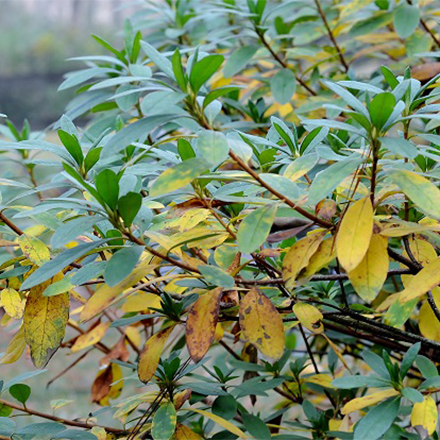
Why are my azalea's leaves turning yellow?
Almost every fall I hear from friends and clients worried about their azaleas’ leaves turning bright yellow. The good news is they are probably just molting (or losing their leaves naturally). Although they are always green, evergreen shrubs do lose their leaves. It's just not all at once like deciduous plants do. Azaleas set their leaf buds in the fall and the emergence of these buds prompts molting. There’s nothing you need to do or worry about. It’s supposed to happen.
However, there are a couple of other reasons why your azalea's leaves could be turning yellow. But again, there’s not much to worry about, they are both very treatable. The first one is covered below, azalea lace bugs. The other reason is a nutrient deficiency, likely nitrogen or iron. If that’s potentially the case, just make sure that there’s proper drainage and then topdress them with organic matter. Testing your soil will be the best way to see if nutrient deficiency is the issue. If the problem persists, hit them with a general-purpose fertilizer (or one that’s tailored for azaleas) in the spring.
Why are my azalea's leaves turning white?
Two of the most common threats to azaleas are azalea lace bugs and powdery mildew. Get detailed information about how to tell what's ailing your azaleas below.
How can I tell if my azaleas have lace bugs?
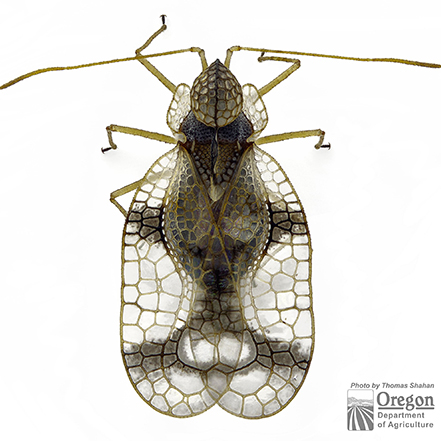
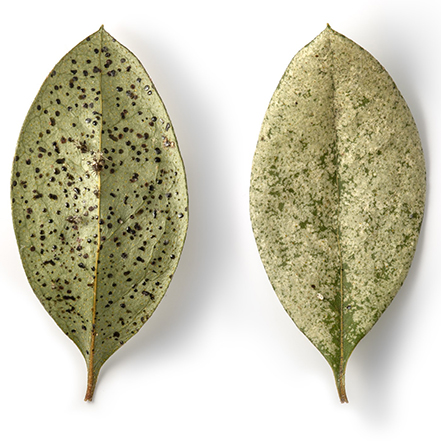
Azaleas with speckled, whitish, or light yellow leaves that look like the leaves pictured here probably have azalea lace bugs.
To determine if that's what's ailing your azaleas, look at the underside of the leaves. Here you'll see if there is what entomologists call "frass," a.k.a. bug poop.
If your leaves are speckled and have frass on the undersides, you can use insecticidal soap in spring or fall. Thus making sure to soak the underside of the leaves. If you want in-depth information about these azalea pests, check out this presentation by Robin Rosetta of Oregon State University.
For gardeners, systemic insecticides should always be the last-resort option. Since, they also kill the majority of the beneficial insects that are helping keep your pest population at bay naturally.
Azalea lace bug and azalea lace bug leaf damage. Photos above by courtesy of Oregon Department of Agriculture, Image by Thomas Shahan, IPPM Imaging
How can I tell if my azaleas have powdery mildew?
If your azaleas have what looks like a white powdery growth on their leaves, they may have powdery mildew. If so, and you want to mitigate the chances of losing their leaves prematurely, consider using a fungicide spray. You should also be sure that you are practicing appropriate watering as outlined above. This is because getting the leaves wet, especially at night, can lead to mildew.
7. Best Easy-Care Azaleas: Double Shot® Azaleas (Zones 6-9)
Are you looking for a hardy, compact azalea that blooms not once, but twice a year? If so, try adding Monrovia’s exclusive Double Shot® Azaleas to your garden. Growing about 3' tall and wide. This vigorous, rounded evergreen beauty can serve as the perfect border. Or as an informal hedge, or even as a great container accent. Being more heat and cold tolerant than many other azaleas. Double Shot® Azaleas make an easy choice for any gardener to include in their garden. And the bonus is, as a reblooming azalea, they show off their large flowers in both spring and summer. What’s not to love?
Ready to Transform Your Outdoor Space?
Are you eager to learn more about creating a beautiful garden? Subscribe to the Monrovia Grow Beautifully newsletter and receive exclusive digital guides straight to your inbox. You'll always be up-to-date on the latest gardening tips and inspiration.
If you dream of a vibrant garden but aren't sure how to get started, we can help. Our care guides and garden design articles will ignite your imagination and showcase the endless possibilities for your outdoor space. Discover our complimentary digital planning guides, which include landscape plans, plant lists, and garden ideas, and begin your journey to a stunning garden today.
About the Author and Designer
Doug Scott is the owner and lead designer at Redeem Your Ground, an exterior design firm, based in Atlanta, GA. Through his designs, Doug hopes to create outdoor spaces. Ones that reflect how each of his clients wants to live outside at home. Doug and his wife, Brittany, also have a family, home & garden blog by the same name. Here they share stories, helpful information, and instructional how-to's. They're hoping to enable and inspire others to live more fully at home.
